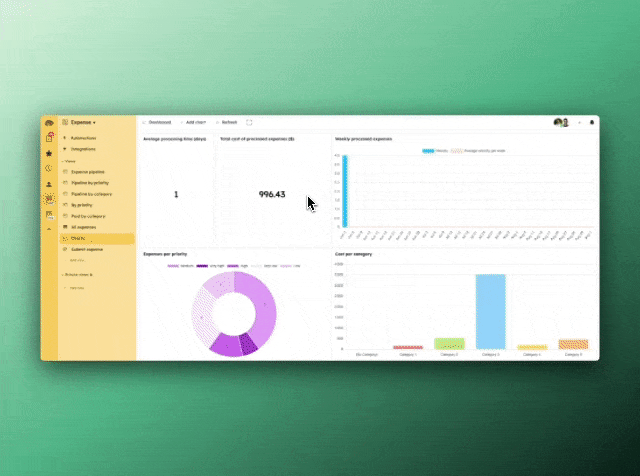Small and Medium-Sized Enterprises, achieve your digitalization without blowing your budget

Digital transformation is no longer an option but a necessity for small and medium-sized enterprises (SMEs) that want to remain competitive in a constantly evolving market.
Indeed, a McKinsey study shows this clearly: companies that are “digital leaders” in their sector grow their revenues four times faster than the average compared to those that are hesitant.
The acceleration of digitalization due to global events like the COVID-19 pandemic has also highlighted the importance of adaptability and agility in businesses.
However, digital transformation remains a real challenge for companies. Many see the benefit, but few manage to achieve their goal, or they do so by blowing their budget.
Another McKinsey study reports that 70% of digital transformation projects do not reach their goal.
Moreover, BCG emphasizes that these failures are even more frequent for large transformation projects, with a failure rate of up to 85% for projects with an investment of more than 3 million euros.
To help you avoid these pitfalls, let’s look at the key elements of a successful digital transformation.
- The state of digital transformation for SMEs
- How to choose the right collaborative tools
- The benefits of digital transformation at all levels
- Our tips for a successful digital transformation
- Conclusion
The state of digital transformation for SMEs
The cost of inaction
Digital transformation is no longer an option but a necessity for the survival and growth of SMEs. According to a McKinsey & Company study, companies that are “digital leaders” in their sector grow their revenues four times faster than the average compared to those that are hesitant. Thus, there is a real loss of potential for SMEs that have not fully embraced this digital revolution.
The paradox of digital transformation
The acceleration of digitalization due to global events like the COVID-19 pandemic has also highlighted the importance of adaptability and agility in businesses. However, digital transformation remains a real challenge for companies. Many see the benefit, but few manage to achieve their goal, or they do so by blowing their budget. 70% of digital transformation initiatives fail due to resistance to change, technological complexity, and costs.
The critical need to transform
Digital transformation is not just about competitiveness, it’s about survival. An Ipsos study reveals that 41% of French companies recognize that digital contributes to their revenue. This disparity highlights the crucial importance of adopting digital technologies for business growth and sustainability.
The growing productivity gap
According to a Banque de France study on the impact of new technologies on the productivity of French companies, businesses that succeed in their digital transformation can increase employee productivity by up to 23%. This productivity gap directly translates into a difference in competitiveness and profitability.
 [French] Key figures of digital transformation
[French] Key figures of digital transformation
Now that we have seen the need to equip ourselves, we must ask how to choose the right tool.
How to choose the right collaborative tools?
Faced with a myriad of digital collaborative tools available, managers must carefully choose the technologies that best meet their needs. We could provide an endless list of points, but that’s not the point. We believe it’s important to keep in mind that an effective digital tool should have three essential aspects: be simple to use, easily integrable into existing systems, and capable of evolving with the company.
Let’s look at each point in more detail:
-
Adaptability: The tool must integrate easily into current processes, not the other way around. Seek flexibility above all else; otherwise, you may end up wasting more time than before.
-
Scalability: The tool must be able to adapt to the company’s growth and evolve with it without needing to be replaced each time a new milestone is reached.
-
User Interface: To onboard as many employees as possible, the user experience must be intuitive, minimizing training costs.
The benefits of relying on collaborative tools are undeniable. Now let’s review some of the many advantages SMEs can gain from them.
Digital transformation benefits at all levels of the company
The new paradigm of collaborative work
The world of work has changed just as the way employees interact with each other has. The physical and temporal boundaries of work have gradually faded. Collaborative tools enable teams to work together synchronously or asynchronously, regardless of their geographical location. This increased flexibility perfectly meets the needs of teams seeking agility and efficiency.
Entire processes digitized
Collaborative platforms offer seamless integration of different aspects of project management, internal communication, and task management. This holistic approach allows SMEs to centralize all their activities, reducing information fragmentation and improving overall productivity. As a result, these platforms can bring together HR, marketing, operations, or management functions within the same tool.
Goodbye repetitive tasks thanks to automation
Most collaborative software includes automation features that free teams from repetitive and tedious tasks. These automations can be very simple, like sending an email for an expense approval, or very complex, with multiple conditions, variables, information transfers, etc. Ultimately, automation allows employees to focus on higher-value aspects of their work, stimulating creative thinking within SMEs.
No more compiling data from different sources
Interactive dashboards provide a clear, real-time overview of project progress. By using a collaborative tool to manage all processes, you centralize information in one place. Thus, the tool will automatically compile these data, which are naturally present in the application. This results in increased transparency, facilitating strategic and operational decision-making for better resource allocation.
 An example of a dynamic dashboard without the need for Excel or PowerPoint file processing.
An example of a dynamic dashboard without the need for Excel or PowerPoint file processing.
Collective intelligence unleashed
Collaborative platforms encourage knowledge sharing and informed decision-making within teams. People working in groups are more likely to make the right decision than they would if working alone. The approach of collaborative platforms fosters the emergence of collective intelligence, allowing SMEs to tap into the diverse expertise of their employees.
Strengthened employee engagement
By facilitating communication and collaboration, these tools help create a more inclusive and engaging work environment. Employees feel more connected to their colleagues and the company, which translates into increased job satisfaction and higher employee retention.
Data protection
With the rise in information sharing and the increased risk of cyberattacks, data security becomes paramount. Most tools include advanced security features, such as end-to-end encryption and 2FA authentication, to protect your company’s sensitive information.
Finally, here are some tips on how to manage your company’s digital transformation.
Our Tips for a successful digital transformation
Key questions to ask
Before embarking on digital transformation, it is essential to ask some key questions:
- What are our company’s strategic objectives?
- What are the specific needs of our clients?
- What is our company’s current digital maturity?
- What are the potential risks and obstacles to digital transformation?
These questions help formulate a clear strategy and prepare your business for upcoming challenges.
Brief summary of our tips
Tip #1: Establish an innovation culture
Tip #2: Invest in continuous training
Tip #3: Adopt an agile approach
Tip #4: Use performance indicators
Tip #5: Use the appropriate tools and technologies
 [French] Digitalization often starts with project management before extending to all company functions: HR, marketing, operations, logistics, legal processes,…
[French] Digitalization often starts with project management before extending to all company functions: HR, marketing, operations, logistics, legal processes,…
Conclusion
The digital transformation of SMEs in 2024 is intrinsically linked to the adoption of high-performing collaborative tools. These solutions not only improve operational efficiency but also redefine how teams work, communicate, and innovate together. By fully embracing these technologies, SMEs can optimize their internal processes while gaining agility and competitiveness in their market.
The future belongs to companies that can fully leverage these tools to create a dynamic and flexible work environment. SMEs that invest in these collaborative solutions not only gain an advantage in overcoming current challenges but also in seizing future opportunities in a constantly evolving professional world.
Learn more
3 possibilities are available to you if this topic interests you:
-
1
Try Kantree here, it is free and you don’t need any credit card
-
2
If you want to learn more about how Kantree can adapt to your challenges, make an appointment with an expert on your use case.
-
3
Are you willing to join +1500 professionals receiving our advices and news on digitalization, collaboration, productivity? Register to our newsletter here.
If this article was useful to you, consider sharing it. You can do so easily below.